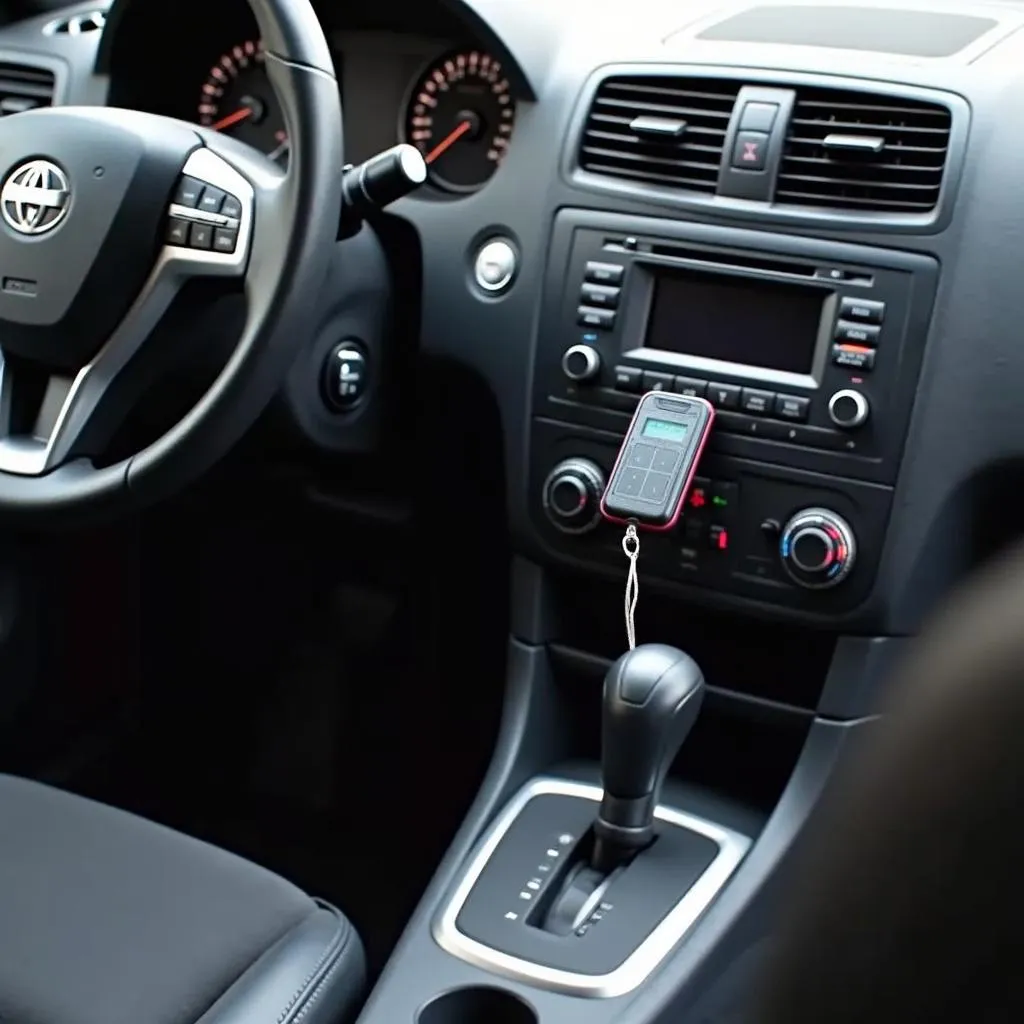In today’s world, car theft is an unfortunate reality. That’s why modern vehicles come equipped with sophisticated anti-theft systems designed to deter thieves and protect your investment. At the heart of these systems lie anti-theft sensors, the unsung heroes working tirelessly to keep your car safe. But how do these sensors actually work?
Understanding the Basics of Anti-Theft Sensors
Anti-theft sensors are electronic components strategically placed throughout your vehicle to detect unauthorized entry or tampering. They act as your car’s nervous system, constantly monitoring for suspicious activity and triggering the alarm system when necessary. These sensors come in various types, each designed to detect specific threats:
1. Door, Hood, and Trunk Sensors
These sensors are typically located within the door frames, hood latch, and trunk lid. They work by detecting changes in electrical current or pressure. When the door, hood, or trunk is opened without disarming the system, the sensor detects a break in the circuit or a change in pressure, signaling a potential theft attempt.
2. Shock Sensors
As the name suggests, shock sensors are designed to detect impacts or vibrations against your vehicle. They contain a small mass suspended within a magnetic field. A sudden jolt or impact causes the mass to move, disrupting the magnetic field and triggering the alarm.
 Car shock sensor illustration
Car shock sensor illustration
3. Motion Sensors
Motion sensors utilize infrared or microwave technology to detect movement inside your vehicle. They emit invisible beams within the car’s cabin. If an unauthorized person enters the vehicle and disrupts the beam pattern, the sensor interprets it as a threat and activates the alarm.
4. Tilt Sensors
Tilt sensors are particularly useful in preventing thieves from towing your car away. They measure the angle of your vehicle. If the sensor detects a significant change in the angle, such as when the car is being lifted onto a tow truck, it triggers the alarm system.
Identifying a Problem with Your Anti-Theft System
While these sensors are incredibly reliable, they can sometimes malfunction. Here are a few signs that your anti-theft system might need attention:
- Your car alarm randomly goes off: If your alarm frequently activates without any apparent reason, it could indicate a faulty sensor sending false alarms.
- Your car won’t start: In some cases, a malfunctioning anti-theft system might prevent your car from starting. This is because the system might be preventing the engine from receiving power as a security measure.
- The anti-theft light on your dashboard stays on or blinks continuously: This light is designed to indicate the status of your anti-theft system. If it remains on or blinks repeatedly, it usually signifies a problem.
 Car dashboard with warning lights
Car dashboard with warning lights
Troubleshooting and Repair
If you suspect an issue with your anti-theft system, it’s crucial to address it promptly. Here’s what you can do:
- Check your key fob battery: A weak key fob battery can sometimes interfere with the anti-theft system. Replacing the battery is a simple first step in troubleshooting.
- Inspect the sensors: Visually check all the sensors for any signs of damage, loose connections, or debris that might be obstructing them.
- Use a diagnostic scanner: For a more thorough diagnosis, consider using a professional-grade OBD-II diagnostic scanner. This tool can read fault codes stored in your car’s computer, pinpointing the source of the problem.
Frequently Asked Questions about Anti-Theft Systems
Q: Can I install an anti-theft system in my older car?
A: Absolutely! While newer cars often come standard with advanced anti-theft systems, you can still equip your older vehicle with aftermarket options for enhanced security.
Q: Can I disarm my anti-theft system myself?
A: While it’s not recommended to tamper with the system yourself, you can try disconnecting the battery for a few minutes. However, if the problem persists, it’s best to consult a qualified auto electrician.
For specialized diagnostics, programming, and remote software installation related to automotive anti-theft systems, consider the services offered by CARDIAGTECH. They provide expert solutions to address a wide range of automotive electronic issues.

